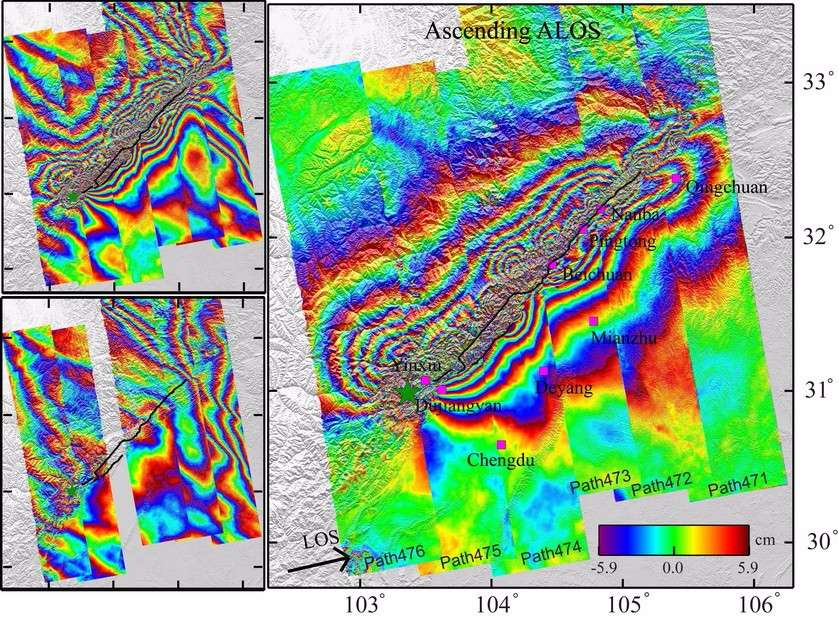2008年汶川地震形变
发布时间:2020-04-25
点击次数:
Which Fault Segments Ruptured in the 2008 Wenchuan Earthquake and Which Did Not? New Evidence from Near‐Fault 3D Surface Displacements Derived from SAR Image Offsets

The 2008 Mw 7.9 Wenchuan earthquake ruptured a complex thrust‐faulting system at the eastern edge of the Tibetan plateau and west of Sichuan basin. Though the earthquake has been extensively studied, several details about the earthquake, such as which fault segments were activated in the earthquake, are still not clear. This is in part due to difficult field access to the fault zone and in part due to limited near‐fault observations in Interferometric Synthetic Aperture Radar (InSAR) observations because of decorrelation. In this study, we address this problem by estimating SAR image offsets that provide near‐fault ground displacement information and exhibit clear displacement discontinuities across activated fault segments. We begin by reanalyzing the coseismic InSAR observations of the earthquake and then mostly eliminate the strong ionospheric signals that were plaguing previous studies by using additional postevent images. We also estimate the SAR image offsets and use their results to retrieve the full 3D coseismic surface displacement field. The coseismic deformation from the InSAR and image‐offset measurements are compared with both Global Positioning System and field observations. The results indicate that our observations provide significantly better information than previous InSAR studies that were affected by ionospheric disturbances. We use the results to present details of the surface‐faulting offsets along the Beichuan fault from the southwest to the northeast and find that there is an obvious right‐lateral strike‐slip component (as well as thrust faulting) along the southern Beichuan fault (in Yingxiu County), which was strongly underestimated in earlier studies. Based on the results, we provide new evidence to show that the Qingchuan fault was not ruptured in the 2008 Wenchuan earthquake, a topic debated in field observation studies, but show instead that surface faulting occurred on a northward extension of the Beichuan fault during or immediately following the mainshock.
引用格式
Guangcai Feng, Sigurjón Jónsson, and Yann Klinger, Which Fault Segments Ruptured in the 2008 Wenchuan Earthquake and Which Did Not? New Evidence from Near‐Fault 3D Surface Displacements Derived from SAR Image Offsets Bulletin of the Seismological Society of America , March 14, 2017, doi:10.1785/0120160126
